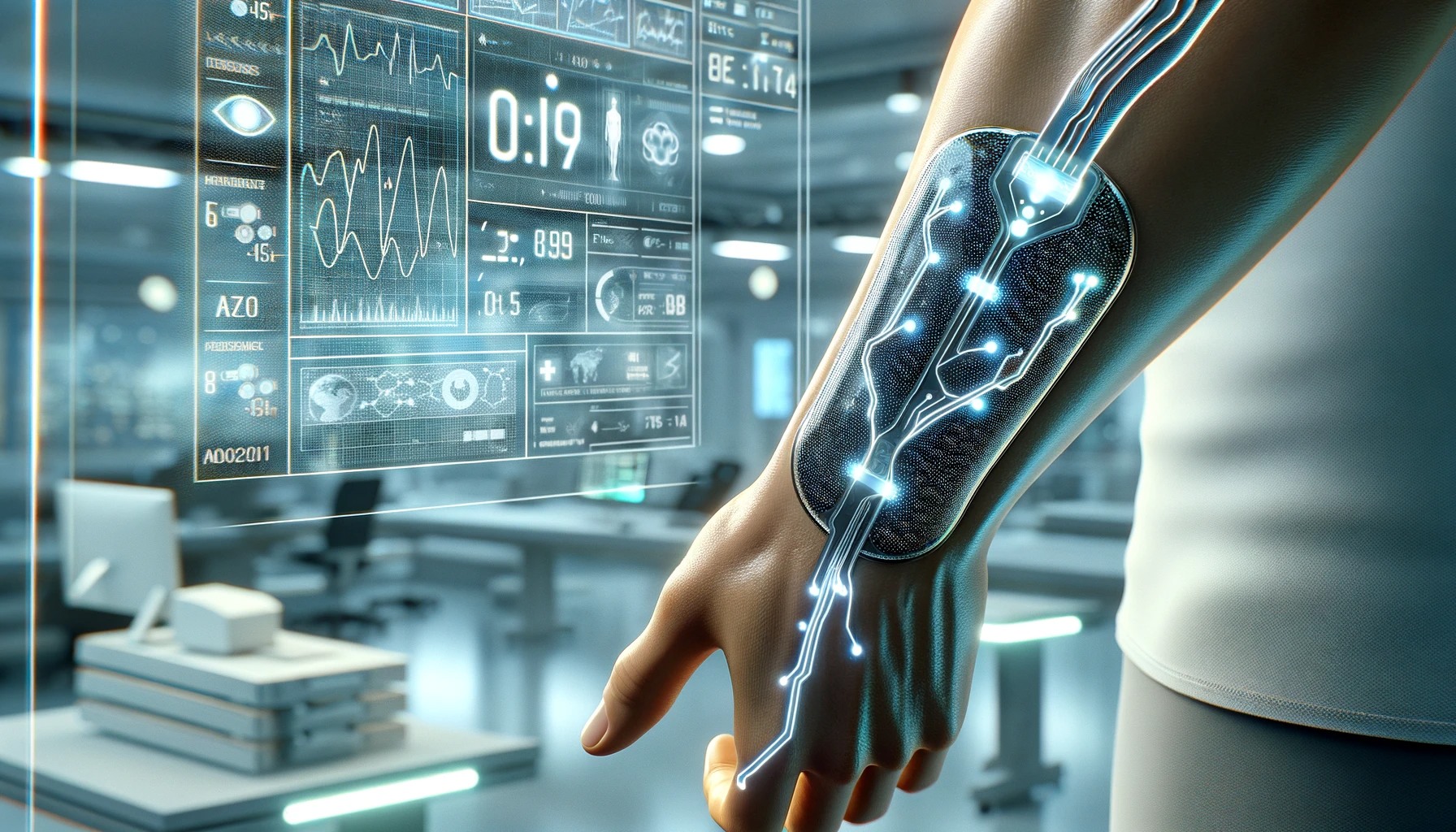In a recent review article published in the journal Nature Medicine Intelligence, scientists at the California Institute of Technology discussed the involvement of artificial intelligence (AI) technologies in engineering next-generation electronic skin (e-skin) and analyzing health data collected by e-skin.
 Review: Artificial intelligence-powered electronic skin
Review: Artificial intelligence-powered electronic skin
Background
E-skin is defined as integrated electronics that mimic and surpass the functions of human skin. E-skins are flexible and comfortable and thus can be placed on various robotic and human body locations to record biosignals continuously and non-invasively. E-skins are typically used as human-machine interfaces in smart bandages, wristbands, tattoo-like stickers, textiles, rings, face masks, and customized smart socks and shoes.
While e-skins have made collecting large-scale health data through real-time recording easier, analyzing and interpreting health information remain time-consuming and challenging. Various machine learning algorithms have already been used in recent multimodal e-skin platforms for data analysis. Recent advancements in big data and digital medicine have enabled AI technologies to optimize e-skin design and create personalized health profiles.
Application of AI technologies in e-skin designing
Reproducing vital human skin properties in artificial skin remains problematic mainly because of many unsolved material challenges. AI has been proposed to optimize materials discovery and sensor designs to redesign new e-skin patches autonomously.
Because of their biocompatibility and cost-effectiveness, natural materials such as cotton and silk are the conventional substrate materials for e-skin design. However, lack of stretchability and tunability are the significant disadvantages of these materials. Synthesized soft materials have shown promising outcomes in accurate signal collection. However, these materials need extra validation for biocompatibility and safety.
Machine learning as a branch of AI can identify promising materials with targeted properties and optimize material synthesis. AI can be used to select and optimize fabrication methods based on material properties. Moreover, machine learning can be used for quality control during mass fabrication, as well as for the optimization of e-skin design.
Machine learning can more efficiently search for kirigami designs for three-dimensional shape-adaptive e-skins and pixelated planar elastomeric membranes than mechanical simulations. This type of e-skin conformation is required for curvy surfaces.
For noisy and discrete material experiment data with high variance, it is necessary to preprocess the data by interpolating missing data and rebalancing biased training sets. A more standardized materials dataset and pipeline are currently needed for faster material development and discovery.
Application of AI technologies in signal processing
Machine learning algorithms are capable of fast and robust data analysis and can improve data quality through signal denoising, multi-source separation, and artefact elimination. Machine learning also has the ability to improve the sensitivity and specificity of e-skin sensors to the target biomarker. For biochemical sensors that involve enzymes with a narrow working range, machine learning algorithms can surpass signal saturation and calibrate nonlinear sensors in a dynamic testing environment.
Motion artefacts are responsible for background noise in e-skin. Machine learning can facilitate accurate data collection by compensating for noise and flaws in wearable sensors. Through repetitive analysis of data-driven sensing outcomes, AI-based platforms can improve the sensing capabilities of biosensors.
AI-powered e-skins for human-machine interfaces
AI technologies play an immensely vital role in bridging the gap between human and machine interactions. AI can rapidly analyze and interpret multimodal data obtained from e-skin patches to manipulate robotics and provide human aid.
AI-powered haptic sensors used in e-skin-based human-machine interface systems can rapidly capture complex hand movements and transmit physical information to a computer system, facilitating the associated robotics to accomplish various tasks, such as object gasping, shape detection, and object identification.
Robotic prostheses designed to rehabilitate motion for people with disabilities can use e-skins for motion data extraction and machine learning algorithms for analyzing and controlling robotic operations.
AI-powered e-skins for disease diagnosis and treatment
AI-powered e-skin is a promising approach for high-accuracy diagnosis of cardiac complications. AI-powered e-skins can rapidly detect small and gradual cardiovascular changes over time, which can facilitate automatic diagnosis in a timely manner.
AI-powered e-skins can be used for real-time monitoring of stress hormone levels to predict mental health issues. AI-powered multimodal e-skins have the potential to model risk associations and predict mental health outcomes by identifying previously unrecognized associations between health patterns and stress risk factors.
AI-powered e-skins can be used to monitor multiple biological parameters and machine learning algorithms can be used to analyze e-skin-derived data for biomarker prediction. E-skin-based drug and metabolic monitoring can also facilitate personalized therapy. AI-powered e-skins can be used to evaluate pharmacokinetics and pharmacodynamics for drug-dose personalization.
Data accessibility and security are the major challenges associated with the clinical application of AI-based e-skins. Thus, strict regulations are needed for adopting AI-powered models in medical practice. Moreover, AI-based models can make mistakes. Thus, ensuring to what extent people can trust AI-generated predictions is essential.